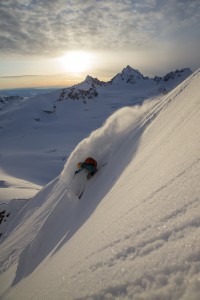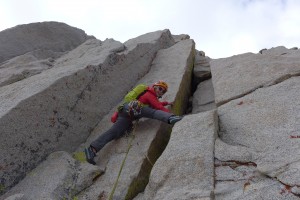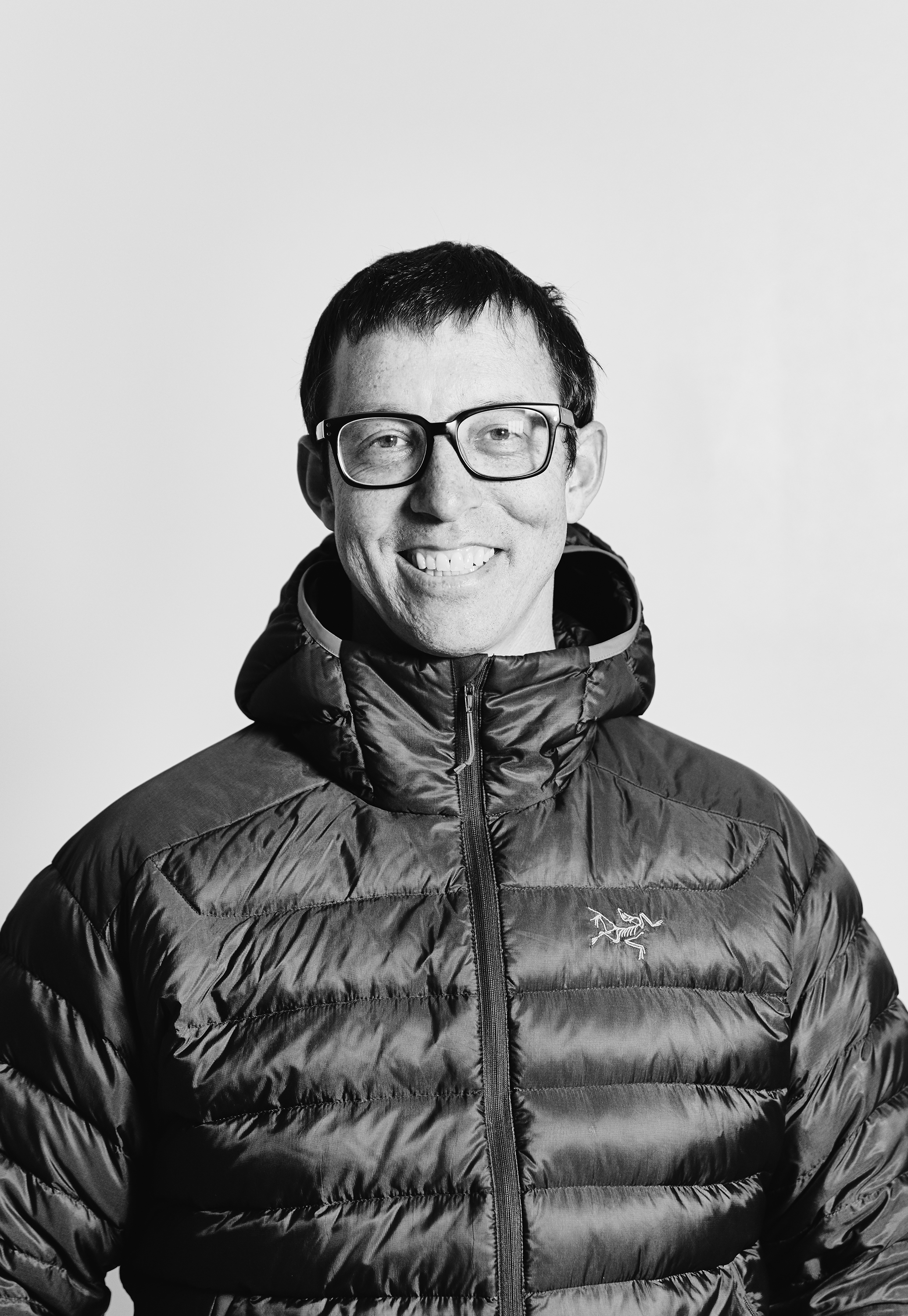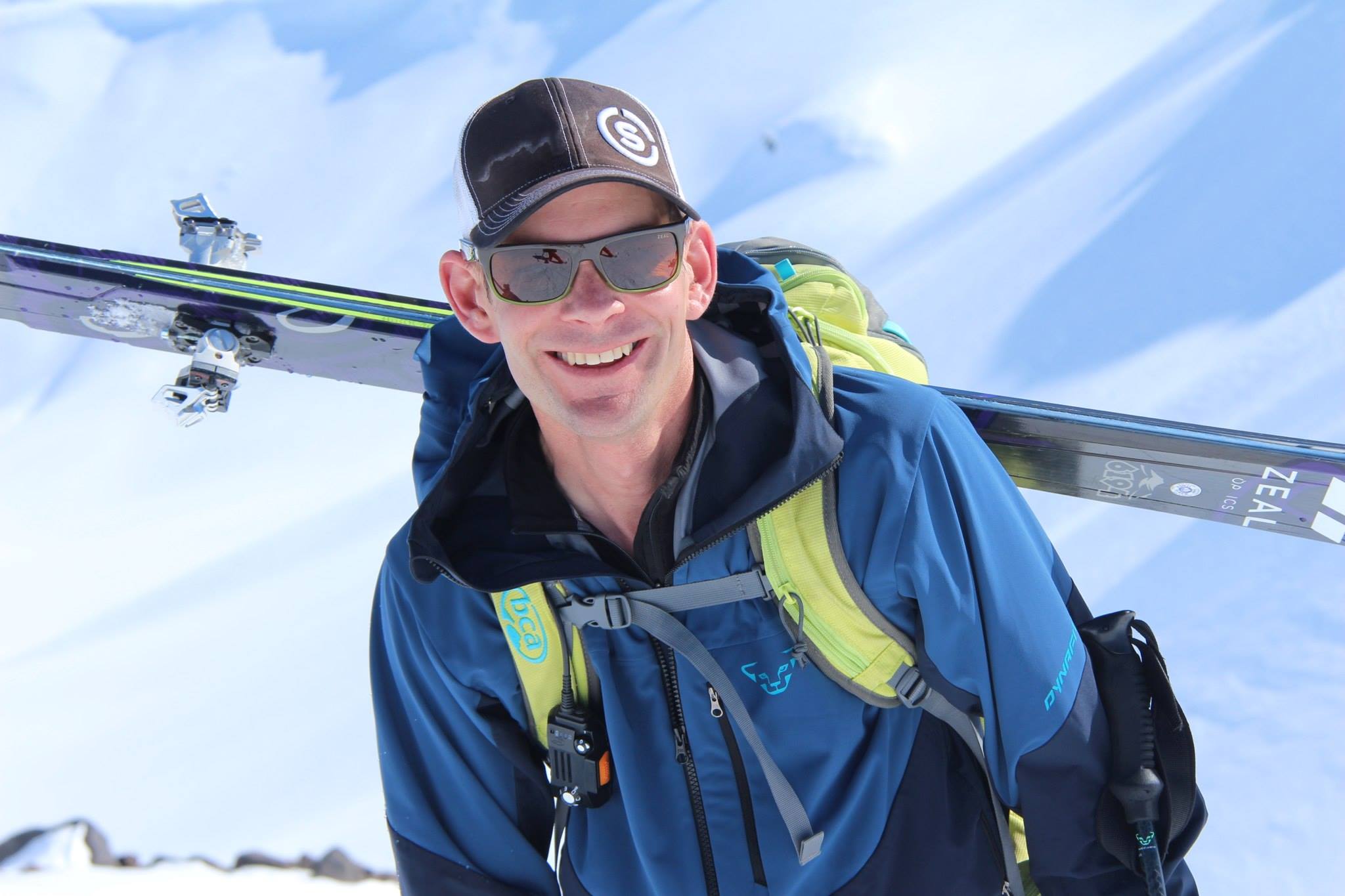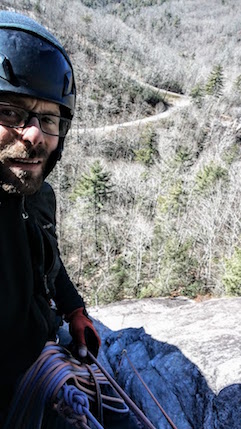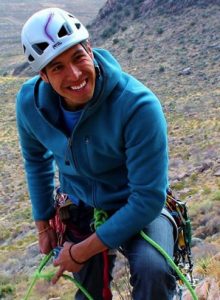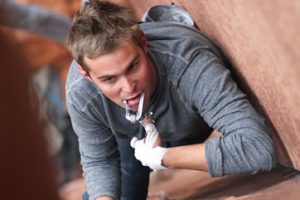Caroline Gleich: Bringing Skills, Soul, and a Woman Guide’s Perspective to the AMGA
Recently, we here at the AMGA were thrilled to have a new member come on board: Caroline Gleich, a professional big-mountain skier based out of Salt Lake City, Utah. An experienced rock climber who’s been climbing regularly since the age of 15, Gleich, originally from Minnesota, cut her teeth on the trad climbs of Little Cottonwood Canyon before falling in love with the Wasatch Range’s famous powder. Up on the snow, she’s guest-instructed backcountry 101 classes for the Utah Avalanche Center and the Snowbird Freeride Avalanche Center, and taught the Backcountry Ski Guide course at the University of Utah. As a sports model, Gleich has also worked on countless ski photo and film shoots in the alpine. Gleich is looking forward to taking AMGA courses in her areas of expertise, she says, because she wants to be empowered “to go anywhere, and have all the tools and training to manage risk not just for myself, but for my partners, too.”
We caught up with Gleich for a handful of questions about how she found her way to the outdoors and instruction, and why she sees the AMGA as an important part of her career arc and as having a key role in the larger outdoor world.
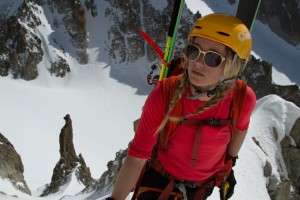
Caroline Gleich ascending the south couloir of the Aiguille de Chardonnay in the French Alps. Photo: KT Miller
How did you get into climbing, and then instruction?
I first climbed at the Salt Lake REI store when I was visiting as a young girl from Minnesota. My half-brother, Martin, lived in Salt Lake City, and he would take me to the gym sometimes. My first time climbing outside was on a backpacking trip to the Wind River Range when I was 10 or 11. Martin set up a toprope. I remember stubbornly insisting to carry out the rope on the descent, because I wanted to be tough and prove how strong I was.
I always loved climbing: I would chimney up the doorjambs of my house and climb everything in sight. I moved to Salt Lake City when I was 15, and my uncle would take me on the classic Little Cottonwood trad lines. After a few years, I decided to focus mostly on skiing, and then backcountry skiing, climbing steep snow and mixed lines. As my ski career grew, I started guest-instructing backcountry 101 classes for the Utah Avalanche Center, then the Snowbird Freeride Avalanche Center, then went on to teach the Backcountry Ski Guide course at the University of Utah. I’ve worked on so many photo and film shoots over the years in the mountains; each day out with a photographer is almost like guiding, because you have to calculate which slopes will have the best snow and light, and then help manage the crew. I genuinely love being in the mountains, and it’s so rewarding to have the skills to share that experience with those around me.
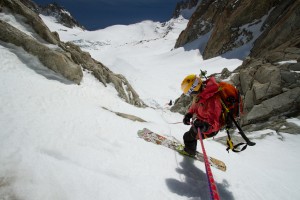
Caroline Gleich rappeling a pitch of ice at the bottom of the Y Couloir on the Aiguille de Argentiere in the French Alps. KT Miller
What part of the country are you based in, and how have you seen the need for guiding/instruction manifested there?
I’m based in Salt Lake City now. There isn’t a huge guiding industry here, and there’s a sort of Wild West attitude toward figuring out how to manage risk in the mountains. Most people learn from a mentor—usually a friend or a family member. I think that many people don’t realize that guides and instruction can help maximize fun in the mountains. Many climbers buy their trad rack and rope, and think they are good to go, just like the skiers who have their beacon, probe, and shovel. I would like to see more importance placed on skills work, not just for personal safety, but for your partner’s, too. Learning different tools to manage risk can greatly increase the enjoyment of a day in the mountains, whether it’s on snow, rock, or ice.
I’d also like to change the attitude toward guiding/instruction—it’s not just for newbies. I think the snowsports industry as a whole could benefit from more alpine-based training. Most skiers and snowboarders never use ropes in the mountains, but when I think about some of the injuries and fatalities I’ve heard about in the past decade, I can’t help but wonder how many could’ve been avoided if someone asked for a ski belay or had been on a rope. The rope is such a versatile tool, and when you know how to use it, it can be quick, easy, and make the mountains much safer.
You just recently joined the AMGA—tell us a bit about where you hope to go with any AMGA training/certification.
The experience of interacting with guides internationally first piqued my interest—guides such as Evan Stevens and Jasmin Caton in Canada, and Caroline George and Liz Smart in Chamonix. Basically, I’ve been thinking about taking AMGA courses for awhile, because I want the highest level of instruction I can get, for myself and my partners. As a professional snowsports and outdoor athlete, I want to empower myself to go anywhere, and have all the tools and training to manage risk not just for myself, but for my partners, too.
My close friend and mountain partner, Liz Daley, also inspired me to join. She was a mountain guide on the path toward certification. I was always so impressed by all the huge lines she would snowboard in Chamonix and with her climbing ability on hard trad routes in Little Cottonwood. I thought, I want to do that. I want to go where she’s going and do it confidently. She showed me what was possible and how to get there. She was always saving up for her next course, and trying to figure out how to make it happen.
I trained for almost two years before I went to visit her in Chamonix. We were always planning trips, dreaming about where we could go and what we could do. After she passed away last fall, I was devastated. [Daley died in an avalanche on Cerro Vespignani in Argentine Patagonia in September 2014.] I felt really lost, and I questioned a lot of my goals in the mountains.
Shortly after her death, I roomed with fellow Patagonia ambassador Majka Burhardt at an athlete summit. I told her I wanted to get better at ice climbing for my mountaineering objectives, and we came up with the idea for her to mentor me on ice, and for me to school her on skiing. Flash-forward to early March of 2015: I was climbing with her in the White Mountains of New Hampshire. Her husband, Peter Doucette, an AMGA instructor, was there, and while we were hiking up Mt. Washington chitchatting, he convinced me to join the AMGA and take courses.
Why are organizations like the AMGA important, now more than ever?
As more and more people enter the mountains with bigger and bigger goals, the AMGA is a way for climbers to gain the knowledge and skills to go into and come out of the mountains safely. It’s an organization that helps people learn to make good choices for themselves. It’s like driver’s ed for climbers on a crowded mountain highway.
Social media has also changed the way we access and conceptualize our mountain experiences. To further the driver’s ed analogy, we all see everyone driving around in cars and it looks so easy. But would you just give an inexperienced driver the keys to a car? No, you take the time to teach them how to drive, so they don’t endanger themselves or others.
Global warming is also making some mountains more dangerous. As a professional skier, I’ve seen firsthand the effects of climate change: Avalanche cycles are more destructive and unpredictable, glaciers are melting at unprecedented rates, and icefalls are becoming more active and dangerous. The mountains are changing very quickly, and for many routes, having an extra bit of training can be the difference between success and failure.
What resources have you taken advantage of so far, or hope to use the in the future, via the AMGA?
Networking and education. I’m excited to be a member of a community that is devoted to sharing their love of the mountains! When I look at some of the great climbs and ski descents of the last decade, many of those involved were members of the AMGA. On a personal level, I want to take courses to become faster and more efficient with ropework and navigation, to fulfill my own mountain objectives. I also want to learn how to share my love of the mountains with other people, and to continue inspiring other people to achieve their mountain dreams.
Anything we didn’t ask, that you’d like to add?
I want to challenge stereotypes about what a guide is and what they look like, to be an example to other women that guiding is a job for them, too. The term “mountain guide” conjures the image of a large, broad-shouldered man capable of carrying clients up the mountain on his back. And brute strength is an important quality, but qualities typically associated with the feminine—compassion, patience, and empathy—are also equally important.

